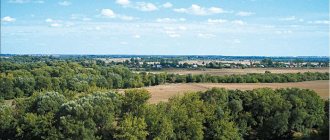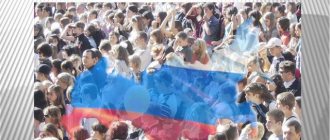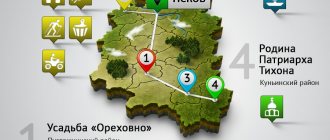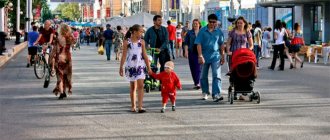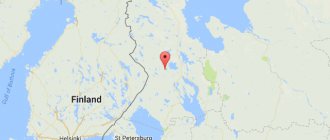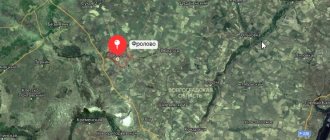How many people live in the city of Kursk, what is the population as of January 1, 2022, what number of people live officially, is it increasing or decreasing in municipal areas, growing or vice versa, decreasing, decreasing and where?
Statistics have always interested people and no matter what it concerns, and we are interested in it for a variety of reasons, out of curiosity and for other, very different reasons, we want to know about something, for example, about a given topic, which we will deal with below.
Geography of the Kursk region
Geographically, the region is located in the southwest of the Central Russian Upland, between 50°54´ and 52°26´ northern latitude. It covers an area of 29.8 thousand square kilometers. From north to south it extends for 171 km, and from west to east – for 305 km.
The region has a temperate continental climate, with warm summers and relatively mild winters. Cloudy weather prevails throughout the year, occupying 60% of all days, and clear weather accounts for only 20%. Annual precipitation is 500–600 mm per year.
Administrative division and economy of the Kursk region
There are 28 districts and 480 village councils in the region. Within the Kursk region there are 2,775 rural settlements and 32 urban settlements. There are five urban districts and 28 municipalities.
The economy of the Kursk region is dominated by agriculture and ore mining. Kursk NPP is operational. 72% of the region's lands are cultivated. Growing of grain, fodder and industrial crops predominates. They raise cattle, poultry and pigs.
Both road and rail transport are developed in the Kursk region. The latter is largely tied to the territory of Ukraine.
Population of the Kursk region - general information
The Kursk region is one of the most populated in Russia. In 2017-2018, the population of the Kursk region was 1 million 116,000 people. The average population density was 37 people/m2. The share of the urban population is 68%.
The ethnic composition of the residents of the Kursk region is quite homogeneous. Over 90 percent of the population are Russians. There are much fewer Ukrainians in the region – only 1–2%. Armenians are in third place. Representatives of other nationalities are present in very small numbers.
The population dynamics of the Kursk region is quite negative. There was a steady increase in population until 1930, but then there was a rapid decline in the number of inhabitants, which continued until approximately 1960. At its maximum, the number was up to 3,000,000 people. By 1960 there were already only 1,500,000 people, that is, 2 times less than in 1930. After 1960, the population declined at a slow pace and not constantly. Thus, in recent years there has been no pronounced demographic dynamics in the region.
In 2003, the number of deceased residents was more than 2.2 times greater than the number of births. In 2010, this gap decreased significantly and amounted to a value close to 1.6.
Dynamics by year
At the beginning of 2000, about 1.281 million people lived in the Kursk region. This number has been constantly decreasing due to natural population decline and the outflow of residents to other regions of the country. In Kursk itself, according to data for 2000, there were 443,500 inhabitants.
This number has changed slightly over the past two decades, increasing and decreasing, until it stopped at 452,000. The increase in the number is due to the immigration influx of residents from the region and neighboring regions; a natural decrease is still observed; a natural increase was recorded only in 2015 year.
The birth rate is gradually increasing. Despite the fairly high level of migration, natural population growth can correct the generally negative population dynamics. For this purpose, various programs are carried out both at the regional and federal levels.
History of the region's population
Favorable climatic conditions and proximity to trade routes contributed to the settlement of the Kursk region. Initially, northerners lived here. Important trade routes passed through their lands.
Until the end of the 16th century, most residents led a nomadic lifestyle and moved frequently. In the next 2 centuries, the settlement of the region was facilitated by the transition to agriculture. In addition to immigrants from primordially Russian territories, Lithuanians began to actively move into the Kursk region. There were many Ukrainians in the south.
Among the Russian population of the Kursk region there were many representatives of southern Russian groups. Western and Central Russian nationalities were also common, but their share was smaller.
Reviews about Kursk
People are not very active in writing reviews about this city. Many speak negatively about the character of the local residents, considering this the main disadvantage of Kursk. There is also an insufficient number of parks and a reduction in green spaces. They write about salaries that they are low, there is a problem of unemployment, lack of rights for workers. The economic situation is said to be unfavorable. They write that without connections it is difficult to get a decent job, and that life is much better in other cities.
The advantages include good opportunities for growing crops and a large number of retail outlets. They also note that in general this city is no worse than other Russian cities.
Of course, reviews reflect the personal experiences of the authors and do not guarantee that others will necessarily encounter the same problems.
Age structure of the population
The average age of a resident of the Kursk region is 41.3 years. Compared to the previous census, it has increased by 1.3 years. This is due to the increase in life expectancy of the population. This value is close to the average for the population of the Central Federal District, where it is 40.9 years, and for Russia as a whole - 39 years. The decline in the birth rate is also the reason for the increase in the average age of residents.
The number of young residents of the region is steadily declining. In 2002, their share was 17.14%, and in 2010 – 14.78%. The picture is similar in the country as a whole - a decrease from 18.14 to 16.19 percentage share, and in the Central Federal District - from 15.33 to 13.85.
At the same time, the share of elderly people, on the contrary, increased – from 24.82 to 25.54 percent.
Sex structure of the population
In the Kursk region, the same situation with the ratio of men and women is observed as in the country as a whole. Thus, the share of women was 54.7 percent, and the share of men was 45.3 percent.
The proportion of married men is greater than the proportion of married women. For every thousand males (16 years of age and older) in the region there were 659 married people, and for every thousand women of the same age there were 528 married people. This is largely due to the larger proportion of women in the population. After all, there are 105.5 thousand more of them in the region than men.
Some residents are in so-called unregistered marriages. There are 71 such people per thousand men, and 57 per thousand women. 225 men and 143 women (per thousand people) consider themselves bachelors (celibate).
The number of divorced men is 63 per thousand and another 13 separated. For women, these figures are 91 and 13 people, respectively.
The largest proportion of men was noted in the Kursk region - 47.3 percent. And the largest proportion of women (54.8 percent) is in the Glushkovsky and Sudzhansky districts.
Population of the City of Kursk as of January 1, 2022
Their importance for the development of industry, trade and agriculture is difficult to overestimate. In the Kursk region, a solemn meeting marked the 10th anniversary of the formation of the Air Force of the Russian Federation.
Since April 2014, a new project for parents of preschool children, “Healthy Family – Healthy Children,” has been implemented on the psychological education of parents and the formation of a psychological culture of the family.
The food production index for January-June 2022 was 100.1%. During the analyzed period, production in physical terms of beef, pork, preserved fish, vegetable and fruit juices for baby food, spreads, vegetable oil, soybean oil, cheeses, fermented milk products (except sour cream), condensed milk products, flour, and mineral water increased.
As reported by the city administration, this year the population of Kursk has decreased by one person. link:.
During times of peaceful life it increased, but during subsequent enemy raids it decreased. However, there were times when the demographic situation improved.
Due to the fact that in the 17th century the fortress city of Kursk served to strengthen the Belgorod defensive line, some of the residents from Central Russia were transported here. Almost at the same time, our region was a place of exile for the unwanted.
A noticeable increase is also associated with Catherine’s reforms. This was also observed during the construction of the railway that passed through the Kursk lands.
The first national census was conducted on February 9, January 28, old style. What did the Kurdish people learn about themselves then? The total population of the province was 2 people.
Women had a numerical superiority over men; only in the provincial Kursk there were more men.
Among the foreigners living there were immigrants and nationals of Germany, Austria-Hungary, France, Turkey - a total of 27 states.
In the cities, especially in Kursk and Belgorod, lived a significant part of the townspeople, merchants, privileged classes of hereditary and personal nobles, and honorary citizens.
Made a contribution - receive interest on the funds credited to the escrow account The Center for the Fourth Industrial Revolution Peskov may appear in the Russian Federation: the presidents of the Russian Federation and Ukraine may discuss the issue of gas transit in Paris The government has calculated the number of migrants needed to work in the Russian Federation this year The Ministry of Finance intends to limit the work of branches foreign insurance companies.
The Ministry of Finance intends to limit the work of branches of foreign insurance companies. A Center for the Fourth Industrial Revolution may appear in the Russian Federation. Made a contribution - receive interest on the funds credited to the escrow account. The concept of a system for guaranteeing the rights of non-state pension funds was published. Main Documents Experts.
Advanced search Resolution of the Administration of the city of Kursk, Kursk region from Establish that the functions for the implementation of state powers of the Kursk region to organize and implement compensation payments in connection with the costs of paying for residential premises and utilities are carried out by: - the social protection body - the social protection and guardianship committee the city of Kursk in terms of making a decision on the appointment of compensation payments in connection with the costs of paying for residential premises and utilities and their implementation; — the authorized institution is the municipal institution “Center for Communal and Social Services of the City of Kursk” in terms of reception, verification of documents, calculation and recalculation of compensation payments in connection with the costs of paying for residential premises and utilities. Committee for Social Protection of the Population and Guardianship of the City of Kursk Tsvirova S.
During times of peaceful life it increased, but during subsequent enemy raids it decreased. However, there were times when the demographic situation improved.
Due to the fact that in the 17th century the fortress city of Kursk served to strengthen the Belgorod defensive line, some of the residents from Central Russia were transported here. Almost at the same time, our region was a place of exile for the unwanted.
A noticeable increase is also associated with Catherine’s reforms. This was also observed during the construction of the railway that passed through the Kursk lands. The first national census was conducted on February 9, January 28, old style. What did the Kurdish people learn about themselves then?
New tariffs for garbage collection in the Southwestern zone were adopted back in June, and in the Northeastern zone at the end of August. The issue is very relevant and concerns all residents of the region. Tariffs have increased significantly, but the quality of service has not improved.
Why this happened and whether it is possible to reduce the fee - deputies tried to figure this out. This is also due to the increase in life expectancy of the population. Additional agreement on amendments to the regional agreement on the minimum wage in the Republic of Tyva dated January 27, September 1.
